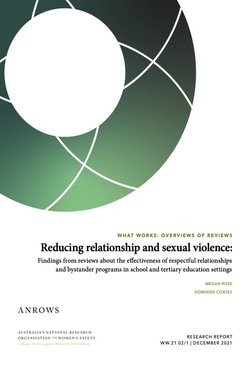By Catherine Mackenzie and Tanya Mackay
Violence against women is one of the most pervasive and dangerous ways in which power imbalances between women and men operate in Australian society. Increasing outrage and pressure from the community service and health sectors, plus compelling evidence on the alarming prevalence of violence against women, led to the launch of The National Plan to reduce violence against women and their children 2010-2022 and associated Action Plans. A great deal of media and policy attention has been directed toward both highlighting the unacceptably high incidence of, and finding ways to reduce, violence against women and their children. Disturbingly, almost a decade after the National Plan was launched, surveys of attitudes towards violence against women are not finding a great deal of positive change, particularly among young people. Attitudes that are supportive of violence against women, particularly those of young men, are especially concerning. Young women are the highest risk group of women for being victims of violence. Young people are the leaders of the next generations and it is crucial that this generation’s leaders take immediate action to ensure that the next generation has the support and empowerment to identify and stop violence against women. If this does not happen, it will be a shameful addition to the long list of intergenerational inequities that will result from the inaction of our generation. Australia-wide studies indicate that higher proportions of rural women have experienced intimate partner violence than urban women.
-
However, most research has sought the accounts of women living in urban environments and policy and funding allocation is therefore skewed toward the needs of urban women (Dillon, Hussain & Loxton, 2015). While some studies have investigated rural intimate partner violence from the perspective of service workers (e.g. Wendt, 2010) few have reported on the perspectives of women (for examples, see Campo & Tayton, 2015; Ragusa, 2017). This project addresses this important gap by aiming to understand young country women’s (16-24 years) perceptions and experiences of intimate partner violence to inform Uniting Country SA (UCSA) Youth and Domestic Violence service worker practices. The project also aimed to provide evidence to assist UCSA coordinate their work across internal and external services and with their local communities to actively reduce violence against women in current and future generations. Interviews were conducted with young country women aged 16-24 years and country women who had experienced intimate partner violence when they were aged 16-24 years, to provide data that would meet project aims.
Adelaide: The Australian Alliance for Social Enterprise and University of South Australia, 2019 41p.





















